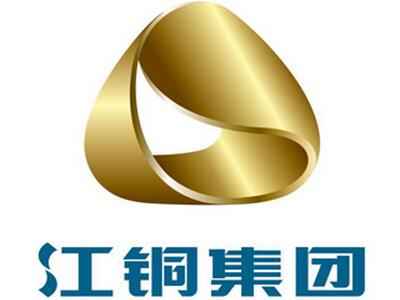JCCL(600362)
Search documents
江西铜业股份(00358.HK)拟11月26日召开2025年第三季度业绩说明会
Ge Long Hui· 2025-11-20 11:57
说明会定于2025年11月26日(星期三)16:00-17:00通过上海证券交易所上证路演中心 (https://roadshow.sseinfo.com/)以网络互动方式召开。 格隆汇11月20日丨江西铜业股份(00358.HK)公告,公司已于2025年10月29日发布了《江西铜业股份有限 公司2025年第三季度报告》。为使广大投资者更加全面、深入地了解公司情况,公司决定召开说明会, 就投资者关心的问题进行交流。 ...
江西铜业股份(00358) - 海外监管公告 - 2025年半年度权益分派实施公告及北京德恒律师事务...

2025-11-20 11:53
本公告乃根據香港聯合交易所有限公司證券上市規則第13.10B條而作出。 茲 載 列 江 西 銅 業 股 份 有 限 公 司(「本公司」)在 中 華 人 民 共 和 國(「中 國」)上 海證券交易所網站(www.sse.com.cn)刊 登 之《江 西 銅 業 股 份 有 限 公 司2025年 半年度權益分派實施公告》及《北京德恒律師事務所關於江西銅業股份 有 限公司差異化分紅事項的法律意見》,僅 供 參 閱。 特 此 公 告。 香港交易及結算所有限公司及香港聯合交易所有限公司對本公告的內 容 概 不 負 責,對 其 準 確 性 或 完 整 性 亦 不 發 表 任 何 聲 明,並 明 確 表 示,概 不對因本公告全部或任何部分內容而產生或因倚賴該等內容而引致的 任 何 損 失 承 擔 任 何 責 任。 海外監管公告 江西銅業股份有限公司 董事會 中 國 江 西 省 南 昌 市,二 零 二 五 年 十 一 月 二 十 日 於本公告日期,本公司執行董事為鄭高清先生、周少兵先生、高建民先生、 梁 青 先 生 及 喻 旻 昕 先 生;及 本 公 司 獨 立 非 執 行 董 事 為 王 豐 先 生、賴丹女 士、劉淑英女士 ...
江西铜业股份(00358) - 关於召开2025年第三季度业绩说明会的公告

2025-11-20 11:49
香港交易及結算所有限公司及香港聯合交易所有限公司對本公告的內 容 概 不 負 責,對 其 準 確 性 或 完 整 性 亦 不 發 表 任 何 聲 明,並 明 確 表 示,概 不對因本公告全部或任何部分內容而產生或因倚賴該等內容而引致的 任 何 損 失 承 擔 任 何 責 任。 關於召開2025年 第三季 度業績說明會的公告 江 西 銅 業 股 份 有 限 公 司(「本公司」)及 董 事(「董 事」)會(「董事會」)全 體 成 員 保 證 本 公 告內容 的 真 實、準 確 和 完 整,對 本 公 告 的 虛 假 記 載、誤 導 性 陳述或者重大遺漏負連帶責任。 本公告乃本公司根據香港聯合交易所有限公司證券上市規則第13.10B 條 作 出。 重 要 內 容 提 示: – 1 – 本公司已於二零二五年十月二十九日發佈 了《江西銅業股份有限公 司2025年第三季度報告》。為 使 廣大投資者更 加 全 面、深入地了解本 公 司 情 況,本 公 司 決定召開說明會,就 投 資 者 關 心 的 問 題 進 行 交 流。 二. 說 明 會 召 開 的 時 間、地 點 • 本公司2025年 第 三 季 度 業 績 說 明 ...
江西铜业(600362.SH)2025年半年度权益分派:每股派利0.4元
Ge Long Hui A P P· 2025-11-20 10:27
本次权益分派股权登记日为:2025年11月27日,除权除息日为:2025年11月28日。 MACD金叉信号形成,这些股涨势不错! 格隆汇11月20日丨江西铜业(600362.SH)发布2025年第二次中期权益分派实施公告,本次利润分配以利 润分配实施公告前确定的股权登记日的A股总股本20.75亿股,扣除回购专用证券账户的回购股份 1044.18万股后,即以20.65亿为基数,每股派发现金红利0.40元(含税)。 ...
江西铜业(600362) - 江西铜业股份有限公司关于召开2025年第三季度业绩说明会的公告

2025-11-20 09:00
证券代码:600362 证券简称:江西铜业 公告编号:临 2025-039 债券代码:243700 债券简称:25 江铜 K1 江西铜业股份有限公司关于 召开 2025 年第三季度业绩说明会的公告 本公司及董事会全体成员保证公告内容的真实、准确和完整,对公告 的虚假记载、误导性陈述或者重大遗漏负连带责任。 重要内容提示: 会议召开时间:2025 年 11 月 26 日(星期三)16:00— —17:00 会议召开方式:本次说明会通过上海证券交易所上证路 演中心(https://roadshow.sseinfo.com/)以网络互动方式召 开。 一、说明会类型 江西铜业股份有限公司(以下简称公司)已于 2025 年 10 月 29 日发布了《江西铜业股份有限公司 2025 年第三季度报告》。 为使广大投资者更加全面、深入地了解公司情况,公司决定召 开业绩说明会,就投资者关心的问题进行交流。 二、说明会召开的时间、地点 说明会定于 2025 年 11 月 26 日(星期三)16:00—17:00 上 海 证 券 交 易 所 上 证 路 演 中 心 (https://roadshow.sseinfo.com/)以网 ...
江西铜业(600362) - 江西铜业股份有限公司2025年半年度权益分派实施公告

2025-11-20 09:00
证券代码:600362 证券简称:江西铜业 公告编号:2025-037 江西铜业股份有限公司 2025年半年度权益分派实施公告 本公司董事会及全体董事保证本公告内容不存在任何虚假记载、误导性陈述或 者重大遗漏,并对其内容的真实性、准确性和完整性承担法律责任。 重要内容提示: 相关日期 | 股份类别 | 股权登记日 | 最后交易日 | 除权(息)日 | 现金红利发放日 | | --- | --- | --- | --- | --- | | A股 | 2025/11/27 | - | 2025/11/28 | 2025/11/28 | 差异化分红送转: 是 一、 通过分配方案的股东大会届次和日期 本次利润分配方案经公司2025 年 10 月 28 日的2025年第一次临时股东大会审议通 过。 二、 分配方案 1. 发放年度:2025年半年度 2. 分派对象: 截至股权登记日下午上海证券交易所收市后,在中国证券登记结算有限责任 公司上海分公司(以下简称"中国结算上海分公司")登记在册的本公司全体股东。 3. 差异化分红送转方案: 每股分配比例 A 股每股现金红利0.4元 (1)本公司于 2025 年 8 月 28 ...
江西铜业(600362) - 北京德恒律师事务所关于江西铜业股份有限公司差异化分红事项的法律意见

2025-11-20 08:46
北京德恒律师事务所 关于江西铜业股份有限公司 差异化分红事项的 北京市西城区金融街 19 号富凯大厦 B 座 12 层 电话:010-52682888 传真:010-52682999 邮编:100033 北京德恒律师事务所 关于江西铜业股份有限公司差异化分红事项的法律意见 北京德恒律师事务所 关于江西铜业股份有限公司 差异化分红事项的 法律意见 法律意见 德恒 01G20250644-02 号 致:江西铜业股份有限公司 北京德恒律师事务所(以下简称"本所")接受江西铜业股份有限公司(以 下简称"公司"或"上市公司")的委托,根据《中华人民共和国公司法》(以 下简称"《公司法》")、《中华人民共和国证券法》(以下简称"《证券法》")、 《上海证券交易所上市公司自律监管指引第 7 号——回购股份》(以下简称"《回 购指引》")、《上海证券交易所股票上市规则》《江西铜业股份有限公司章程》 (以下简称"《公司章程》")等相关法律、法规及规范性文件的规定,就公司 2025 年半年度利润分配涉及的差异化分红(以下简称"本次差异化分红")相关 事项发表本法律意见。 为出具本法律意见,本所律师作出如下声明: 1.本所律师依据 ...
江西铜业:2025年半年度拟实施差异化分红派现8.26亿元
Xin Lang Cai Jing· 2025-11-20 08:40
江西铜业公告称,因2024年回购股份,截至2025年10月30日回购专用证券账户有1044.18万股,按规定 该部分股份不参与利润分配,故本次2025年半年度权益分派需进行差异化分红。公司拟以206480.56万 股为基数,每10股派现金红利4元(含税),共计派发现金红利8.26亿元。经计算,本次差异化分红对 公司A股除权除息参考价格影响绝对值为0.005%,小于1%,影响较小,且符合相关规定,不损害公司 和股东利益。 ...
有色金属行业三季报:超九成公司盈利 鹏欣资源、天齐锂业等扭亏为盈
Xin Hua Cai Jing· 2025-11-19 06:37
Core Insights - The A-share non-ferrous metal industry, comprising 141 listed companies, achieved a total revenue of 2.82 trillion yuan in the first three quarters of 2025, marking a year-on-year growth of 9.3%. The net profit attributable to shareholders reached 151.29 billion yuan, reflecting a significant increase of 41.55% [2][3]. Revenue Performance - Jiangxi Copper, Zijin Mining, and China Aluminum ranked highest in revenue, with figures of 396.04 billion yuan, 254.2 billion yuan, and 176.51 billion yuan respectively. Over 70% of the companies in the non-ferrous metal sector reported year-on-year revenue growth [5][7]. - Companies such as Luoyang Molybdenum and Yunnan Copper also exceeded 100 billion yuan in revenue during the same period [7]. Profitability - More than 90% of the listed companies in the non-ferrous metal sector reported profits in the first three quarters of 2025. Zijin Mining led with a net profit of 37.86 billion yuan, achieving a year-on-year growth rate of 55.45% [7]. - Companies like Pengxin Resources and Tianqi Lithium successfully turned losses into profits during this period [8][10]. Gross Margin Analysis - The average gross margin for A-share non-ferrous metal companies was approximately 18.15%, an increase of 0.47 percentage points year-on-year. Companies such as Zhaojin Mining, Cangge Mining, and Xiaocheng Technology exhibited significant growth in gross margin [8][10]. - Notably, Xiaocheng Technology and Sichuan Gold had the highest sales gross margins at 65.07% and 64.11% respectively [11].
江西铜业:截至10月末A股股东人数167630户
Zheng Quan Ri Bao· 2025-11-18 11:42
证券日报网讯江西铜业11月18日在互动平台回答投资者提问时表示,截至2025年10月31日,公司A股股 东人数为167630户。 (文章来源:证券日报) ...
